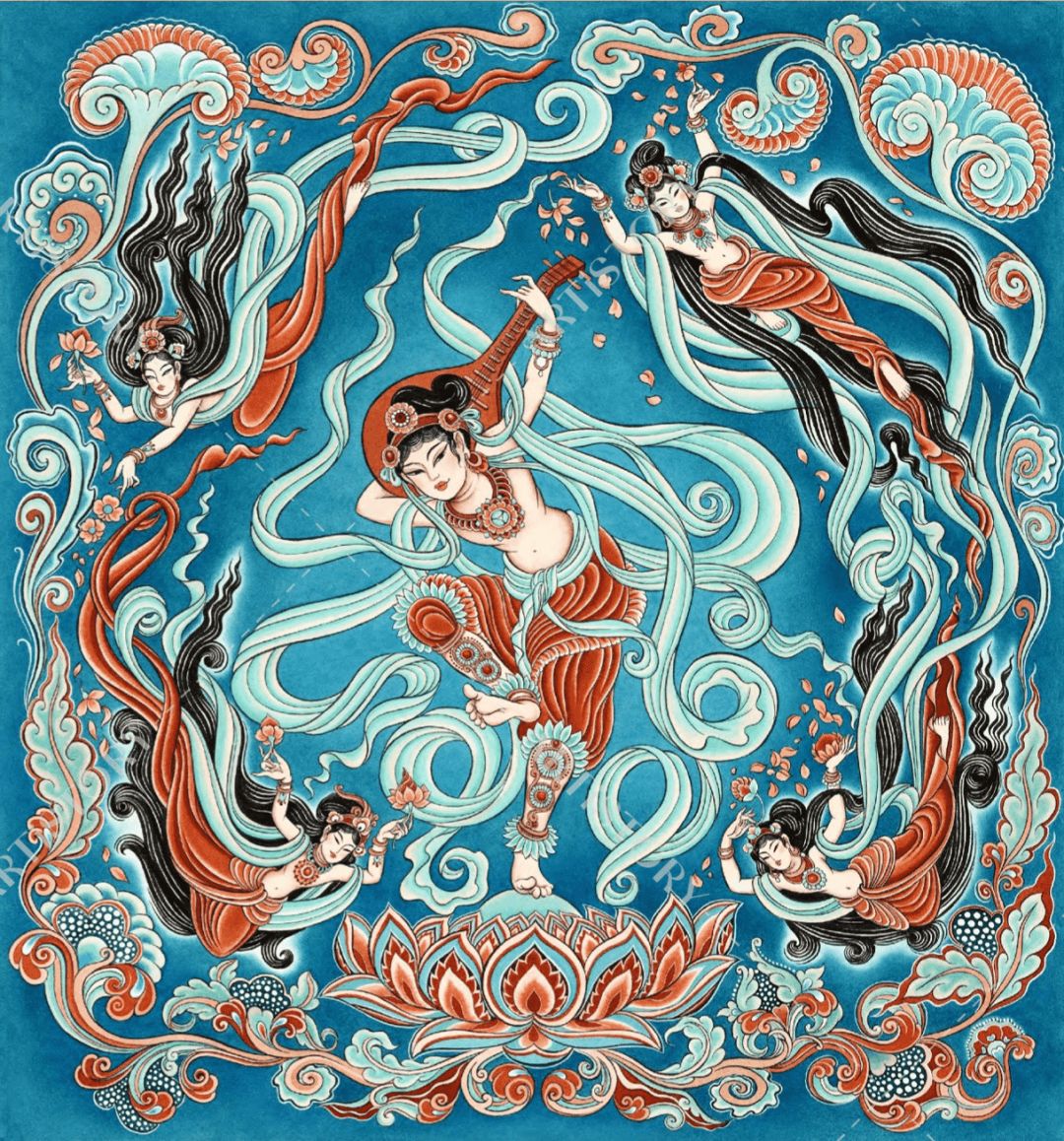Cultural and artistic treasures in museums have been the source of inspiration for generations of creators, and the Mogao Caves are providing rich inspiration for artists to continue the cultural creativity of Dunhuang for a new era.
Inspired by the canopies, murals and flying stories of the Mogao Caves and incorporating these with Western myths and fairy tales, the Dunhuang story has been re-woven and re-imagined by contemporary artist Sveta Dorosheva for ARTiSTORY’s Global Artist Programme. Born in Ukraine and currently based in Israel, Sveta creates art for books, magazines and brands. She has published best-selling books and been shortlisted twice for the World Illustration Awards. Sveta’s narrative art and detailed illustration reveals her fascination for myth and fairy tales.
“I was read a lot of fairy tales as a child, because I was rather of weak health and spent lots of time in bed. I was enthralled by these mysterious, enchanting worlds”

Sveta’s fascination with myths and fairy tales is the foundation of her artistic creations and it is these wonderful ideas from the innocence of childhood that enable her to observe the world with curiosity. Sveta was blown away when she first saw images of Dunhuang. Her first impression was “oh my, this looks like 500 Buddhist Sistine chapels and nobody knows!” During the creative process, although there was not much detailed English information about Dunhuang, Sveta found the artistic inspiration of the caves inexhaustible. And she discovered something new every time she looked. "I am so fascinated by the art treasures in these caves that I am overcome by a childish feeling of discovery.”
She often thinks of the creators of the Dunhuang frescoes. These unknown artists who spent their whole lives in the humble service to beauty, leaving behind these amazing visions for future generations and she hopes that through her work, the timeless beauty of forgotten artists will become more widely known. Sveta has a deep love for cultural studies, and will spend weeks researching online, in museums, and in libraries. She once spent a whole fortnight studying an illustrated compendium of orchids, completely absorbed in the world of the artist who spent a lifetime drawing each blossom in painstaking detail.
The Dunhuang-themed creation was tailor-made for Sveta and her fascination with the fusion of cultures. After thousands of years of fusion, Dunhuang culture and art cover all aspects of history, geography, economics and politics, ethnic religion, literature and art, and to her, it is a treasure-trove. Dunhuang was a meeting point on the Silk Road for travellers passing between East and West one thousand years ago and this gathering of diverse people and cultures led to the creation of these great artistic treasures. Here, people from different worlds met and traded goods, but as Sveta points out:
“The first thing people trade is always their story, their culture and vision of the world.”

"Enter the Dream World"
based on the creation of cave 25 of the Mogao Grottoes, Song Dynasty
In her work Sveta is careful to respect the original art, and although she reconstructs images damaged by time and sand through imagination and research, she still tries to retain the texture and essence of the original. She found that in Chinese art, the lines tend to be smooth, without angles, flowing like water. For example, a curved wrist is often completed by small and fragmented curves rather than a single bend. She admires this elegant brushwork and tries to incorporate this technique and charm into her paintings. She also wanted to use natural mineral pigments to get closer to the artists who created the original murals.
The "Zongge Xianque" series of artworks created by Sveta is based on the music and dance scenes in the Caves. With her meticulous hand-painting skills, the maiko, fairy birds and Sendai pavilions in Dunhuang frescoes have been reborn.
“Here, east and west got intertwined into mesmerizing images of archetypal human dreams and eternal longings – for wisdom and meaning, for happiness and prosperity, for inner peace and sublime beauty. That’s where I tend to focus – those visions – because we still need them today.”

"Seeing Heaven"
based on the creation manuscript of Cave 321 of the Mogao Grottoes, early Tang Dynasty

